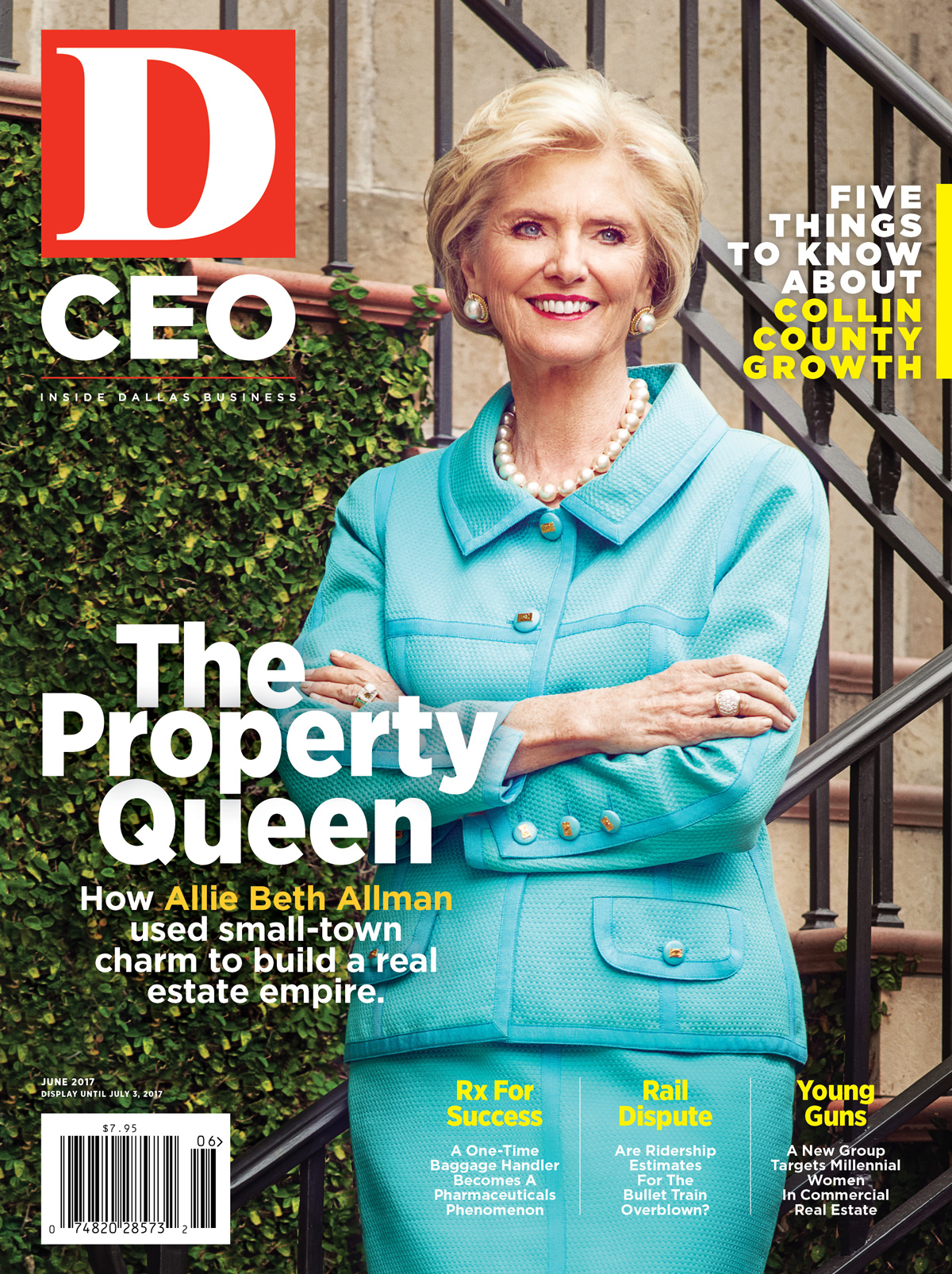They weren’t Toyota’s finest few years. The now-Plano-based automaker suffered numerous hits to its reputation, millions of dollars in losses, and relentless tough questions from consumers, reporters, and Congress. Beginning in 2009, drivers were getting injured and even dying after their Toyota vehicles were allegedly suddenly accelerating on their own. The company was in hot water, and it needed someone to answer to the public. Someone it could trust to fully understand the technology in the vehicles, be able to answer questions from the public and the media, relay communications back to the team, and lead a group internally to deal with the crisis.
So it turned to Kristen Tabar, an engineer who had spent nearly 20 years with the company at the time and specialized in the company’s electronic systems. “This was truly a change point in my career,” Tabar says. “As engineers, we rarely get in front of TV cameras or newspaper journalists.” Tabar would soon get plenty of experience in front of the media. She was quoted in The New York Times, the Washington Post, and USA Today, and did video interviews for broadcast stations including CNN and CBS. She even testified before Congress and worked with the National Academy of Sciences and NASA to better understand the issue, she says. Her charge: Explain the problem in layman’s terms and dispel any misinformation.
Kristen Tabar, Toyota
rnrn“We’re too often not encouraging young women to think of the tech space.”
Tabar, now vice president of the company’s Technical Strategy Planning Office division, told her story about stepping up during challenging times in front of a crowd of about 650 people at Accenture’s recent International Women’s Day event in Dallas. There, she described an important lesson she learned first-hand and, to this day, has never forgotten: “crisis [provides] a ripe environment for leadership.”
Toyota’s woes began in 2009, when complaints arose that its vehicles’ gas pedals were sticking to the floor mats, preventing drivers from slowing down or stopping. In August 2009, the National Highway Traffic Safety Administration launched a probe into the issue after Mark Saylor, a California Highway Patrol officer, crashed in his Toyota Lexus 350 going 120 miles per hour. Saylor’s car was carrying his wife Cleofe, daughter Mahala, and brother in-law Chris Lastrella. All four of them died after the crash. A 911 call from Lastrella revealed that the gas pedal was jammed and the off-duty officer was unable to stop. Toyota later issued a recall for 3.8 million vehicles to replace their driver-side mats, which were suspected to be the problem.
In late November of that year, the problem escalated. Toyota said it would have to replace the gas pedals in about 4 million vehicles. The automaker said the new shorter pedals would prevent the possibility of sticking. It also released plans to install brake override systems—which could automatically slow vehicles if the gas pedal stuck—as a standard feature in all of its 2010 vehicles. But the problem persisted into January 2010, with drivers complaining that the acceleration had nothing to do with the floor mats. The problem led to Toyota recalling about 8 million vehicles over time.
“We really struggled,” Tabar recalled during her talk in Dallas. “Our normal reaction was to put our heads down and work even harder. But that probably wasn’t the right reaction. So as the days wore on, the internal anxiety ratcheted up, and we started to hear over and over again from customers just how scared they were.”
On top of that, government groups were advising customers to stop driving Toyota vehicles, as advocacy groups called for more action. That’s when Toyota North America sought out someone who could fully understand the issue and explain how the company was addressing it. It found that person in Tabar, the most senior employee in electronics at the time. “It really takes a toll on the people in the organization,” Tabar said. “To hear from the newsperson or stranger on TV or, worse, a neighbor or kid’s teacher: ‘What are you doing? Are you building death machines?’ The morale internally was very low.”
So Tabar got to work, doing her best to explain how Toyota tests its vehicles. She and her team also helped provide Toyota employees with answers to the public’s tough questions. In February 2011, NHTSA said Toyota was not responsible for unintended acceleration issues. The news came after a 10-month study at the request of Congress and with help from NASA engineers. “NASA engineers found no electronic flaws in Toyota vehicles … required to create dangerous high-speed unintended acceleration incidents,” a press release from the U.S. Department of Transportation stated. “‘Sticking’ accelerator pedals and a design flaw that enabled accelerator pedals to become trapped by floor mats … remain the only known causes for these kinds of unsafe unintended acceleration incidents.”
But, the story didn’t end there. In 2013, an Oklahoma courtroom found Toyota responsible for a fatal crash in 2007. The jury ruled that electronic malfunctions led to the unintended acceleration that killed one woman and injured another person. Toyota settled the case privately with the plaintiffs, but disagreed with the verdicts and continued to defend its vehicles.
Matters grew worse for the automaker when the Department of Justice slapped Toyota with a $1.2 billion fine for misleading the public and regulators about its acceleration issues. The DOJ said Toyota was to blame for not recalling all the vehicles that could have been susceptible to floor-mat entrapment, and for taking steps to hide its “sticky pedal” problem.
Toyota’s crisis was a learning moment for Tabar. “Working hard doesn’t always translate into the perfect situation,” she said. “Sometimes when you’re working hard, and your head is down … you lose sight of what’s actually happening around you. For me and Toyota at the time, we sort of lost our way.”
But, the leadership lessons she learned through it all—stepping up, facing the public, and trying to better understand the needs of the customers as well as the employees—have served Tabar well beyond the crisis. Tabar, who’d worked her way up the corporate ladder beginning in 1992, says the experience helped her better assist the rise of future leaders within the company. “Through this crisis leadership, I was able to work with so many parts of our company,” she said. “So when the crisis started to subside and we went back to our normal jobs, I was able to use that network. Today, in my current role, I’m able to offer my team a wider amount of opportunity.”
Tabar knows she’s had quite a bit of opportunity at Toyota, not only in helping manage the crisis, but also as a female engineer. And she thinks that engineering continues to be an area that needs more women and female leadership. The solution starts with awareness both from educators and companies alike, she says. “We’re too often not encouraging young women, and women early in their careers, to think of the tech space, or to go back and get an education in that space,” Tabar says. “We have to proactively go after that.”
Toyota has a few initiatives to do just that. For example, it hosts “Introduce a Girl to Engineering Day,” an event that brings together female engineers from Toyota with students to lead creative design and mentoring activities. It also participates in the Society of Women Engineers Conference, where its team members partner with female college students to improve their skills. Toyota also sponsors several other programs that focus on female leadership programming and skill development.
“At Toyota, we aim to empower women by challenging what’s possible through a variety of different activities,” says Aaron Fowles, Toyota Motor North America spokesperson. “Some of those activities include education, leadership, professional development, and community support.”
The company would not release numbers regarding the gender makeup of its leadership positions. But Tabar serves as an example of a woman who took an opportunity at the company and ran with it. Among her duties, she’s now charged with research and development strategy, human resources planning, financial planning and management, and capital investments.
It’s a long way up from her first day at Toyota, fresh out of the University of Michigan. While the road with Toyota hasn’t always provided the smoothest ride, it’s given Tabar the tools to create new paths for herself and others.
Danielle Abril is the managing editor of D CEO.







